Small bathroom paint ideas – 10 ways to make this tiny place come alive
Use these small bathroom paint ideas to glow up one of the tiniest yet most important spaces in the house

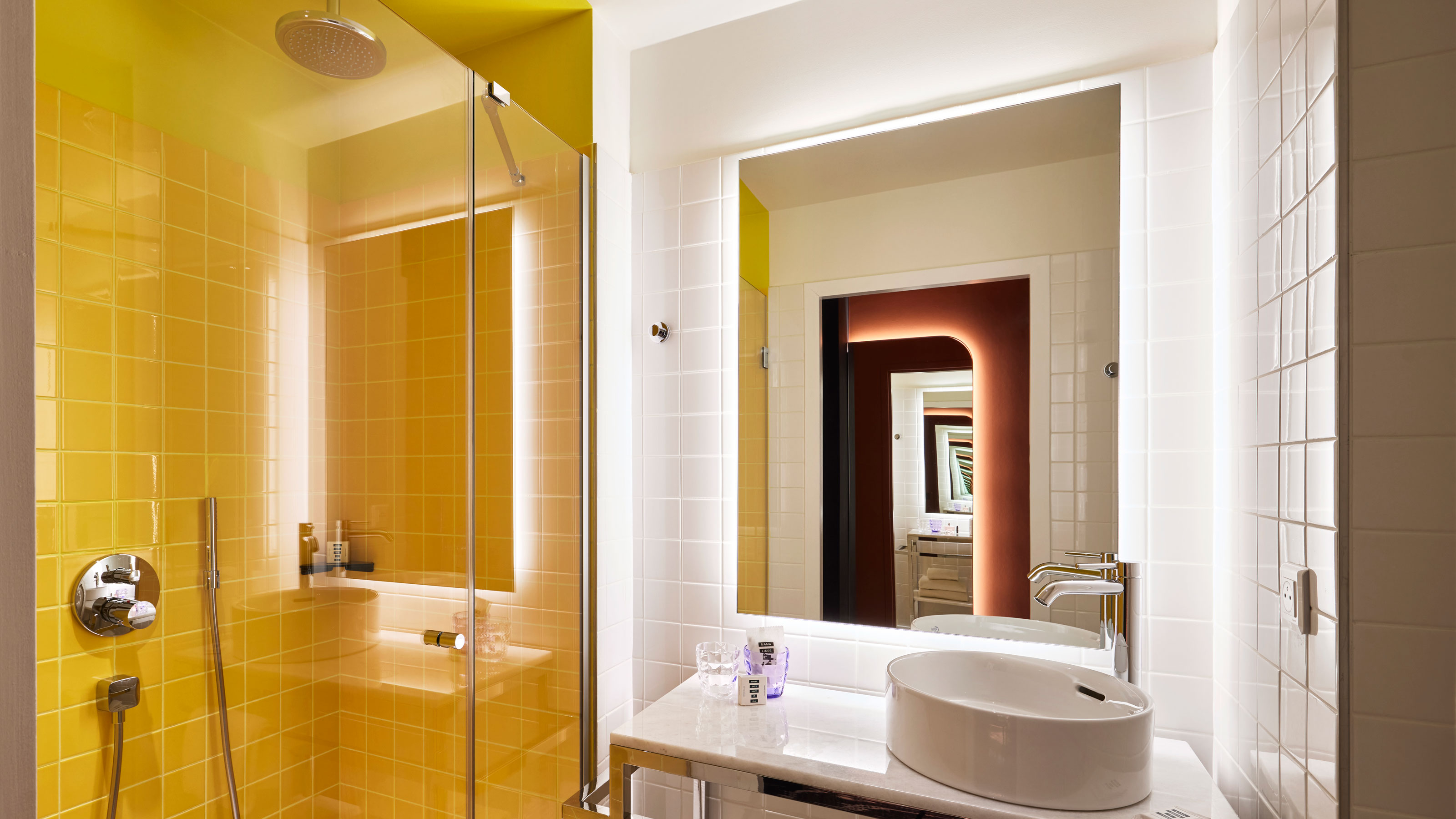
With the right small bathroom paint ideas, you can be sure that the tiniest space in your home is a place of wonder. It may be one of the smallest rooms in your house, but that doesn't mean it shouldn't pack a punch.
A small bathroom is a particularly good canvas to get creative with paint ideas, especially if it's a powder room for guests looking to make an impression. Paint is an inexpensive way to give oodles of character. Plus, if you use paint in the right way, paint can make a small bathroom look bigger.
So, if you're looking to amp up a pocket-sized washroom, we've pulled together some of our favorite creative small bathroom paint ideas to inspire.
10 small bathroom paint ideas to add character to a tiny design
'The past two years have shown us how important it is to love our homes,' says Sue Wadden, director of color marketing at Sherwin-Williams. 'While previously we may have thought of a bathroom as a quick, in-and-out type of space, we now think of the bathroom as our spa and salon. Paint colors can help set the foundation for a relaxing experience in the bathroom, whether it’s five minutes in the morning to get ready or an hour at the end of the day to unwind.'
1. Highlight the shower area with pop colors
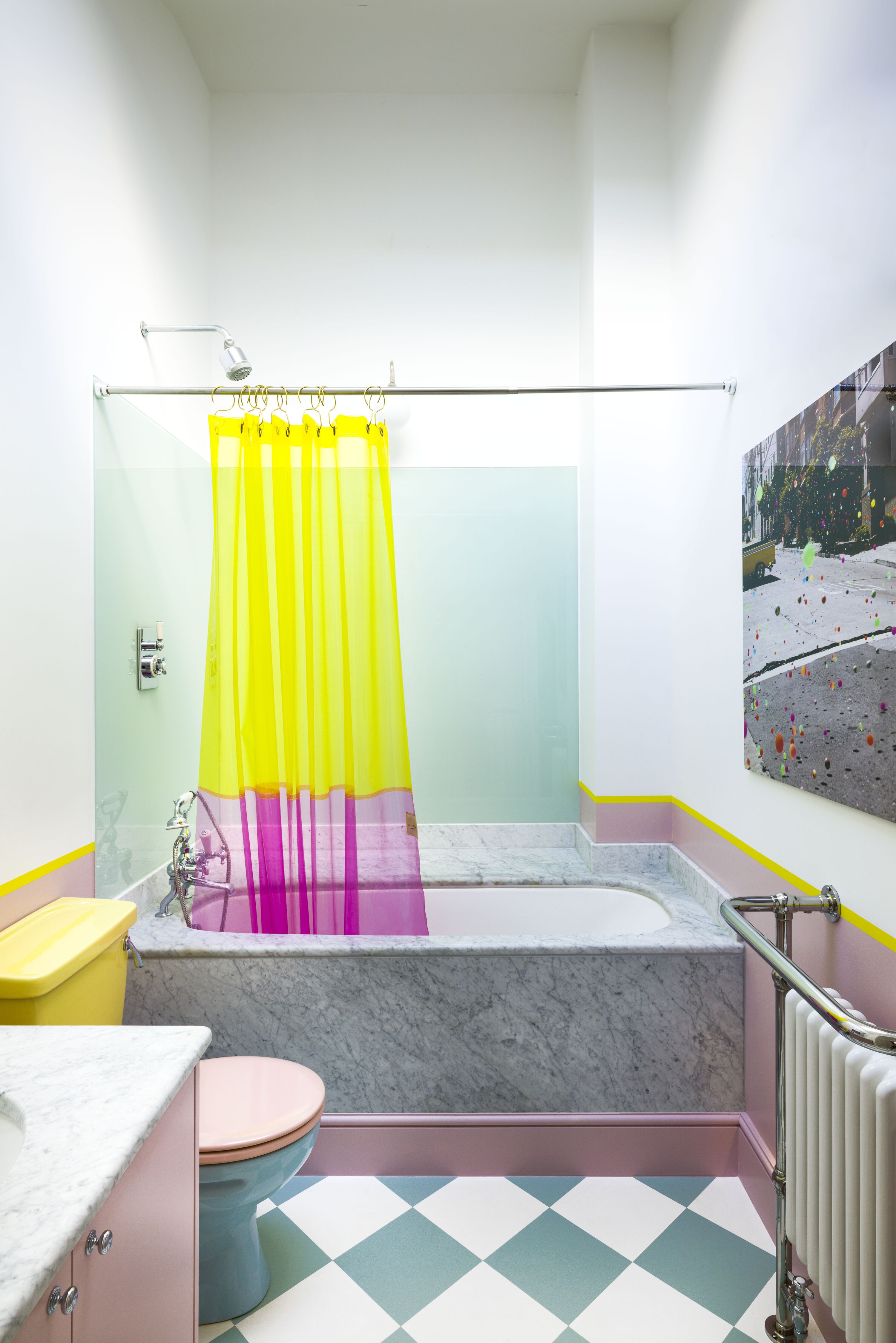
In a tiny bathroom, where you may have to skimp on accessories and other elements for lack of space, paint can do all the talking and even establish a theme.
Consider experimenting with small bathroom color ideas and paint the room in bold color pops.
In this small bathroom, designed by K&H Design, there is a wonderful color flow at play, where the hues from the floor and WC are mirrored on the curtains and eventually the wall and skirting. The paints highlight the shower area and create a candyfloss space that is both pleasing to look, at and we are sure, pleasing to use.
The Livingetc newsletters are your inside source for what’s shaping interiors now - and what’s next. Discover trend forecasts, smart style ideas, and curated shopping inspiration that brings design to life. Subscribe today and stay ahead of the curve.
2. Experiment with a limewash paint effect
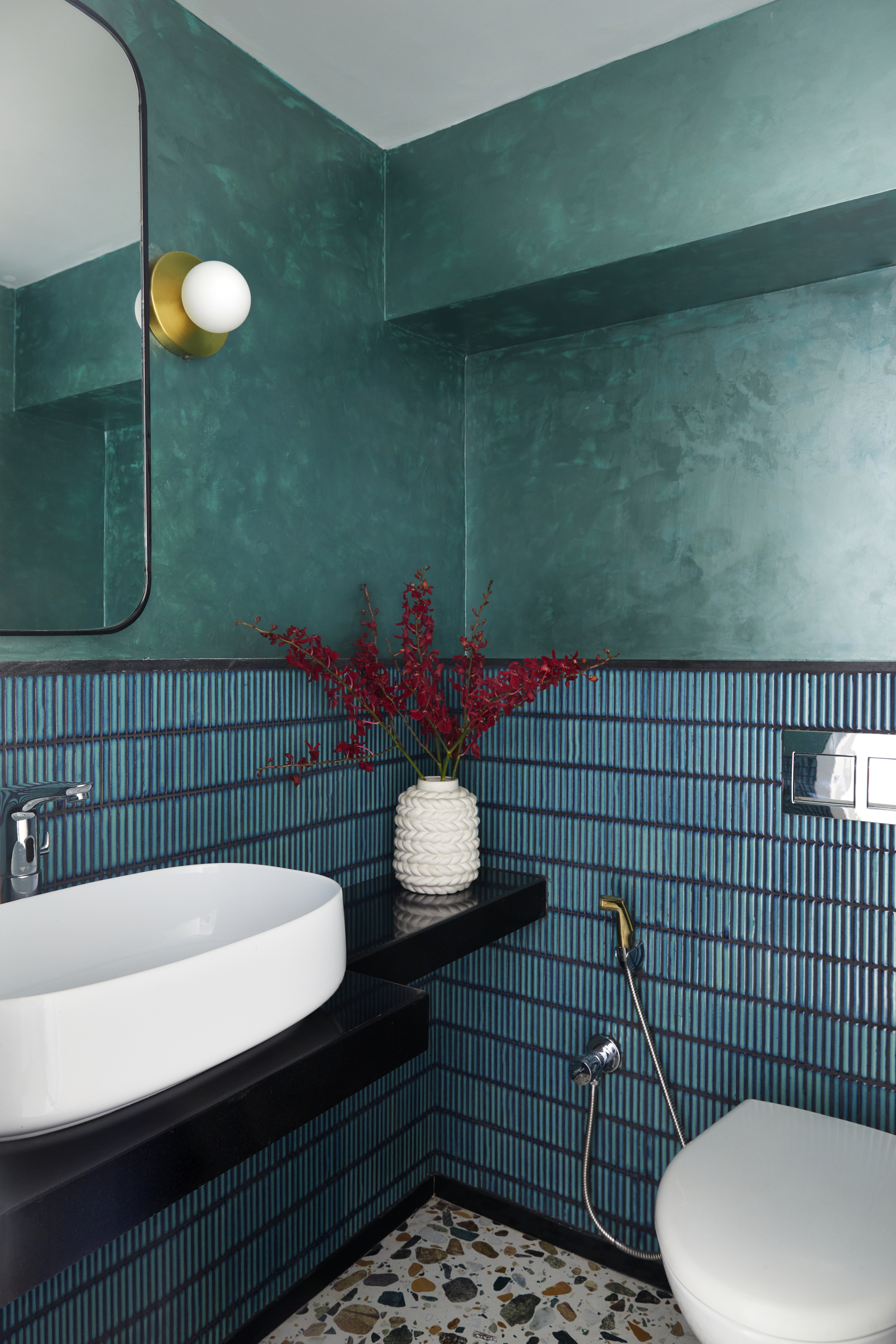
In any space, the wall color is the main decorating decision, and the rest of the decor follows. While largely, paint choices and options are aplenty, when it comes to painting walls in a small bathroom, the decisions need to be careful.
Tiny areas do better with warmer, lighter colors that tend to open up the space and allow natural light to bounce around. And, since paint is perhaps going to be the central decorating option, it needs to be more than just a flat hue on the wall.
Case in point: limewash paints. Earthy and rich in texture, this paint effect is the most easy-going option. The paint is usually free of solvents and is made from natural lime and natural pigments. An eco-friendly option, it is high in character and low in visual bulkiness.
This paint can be applied to drywall with the right primer. Go for a mineral-based one that creates a surface the limewash can bond to.
3. Add a hand-painted mural
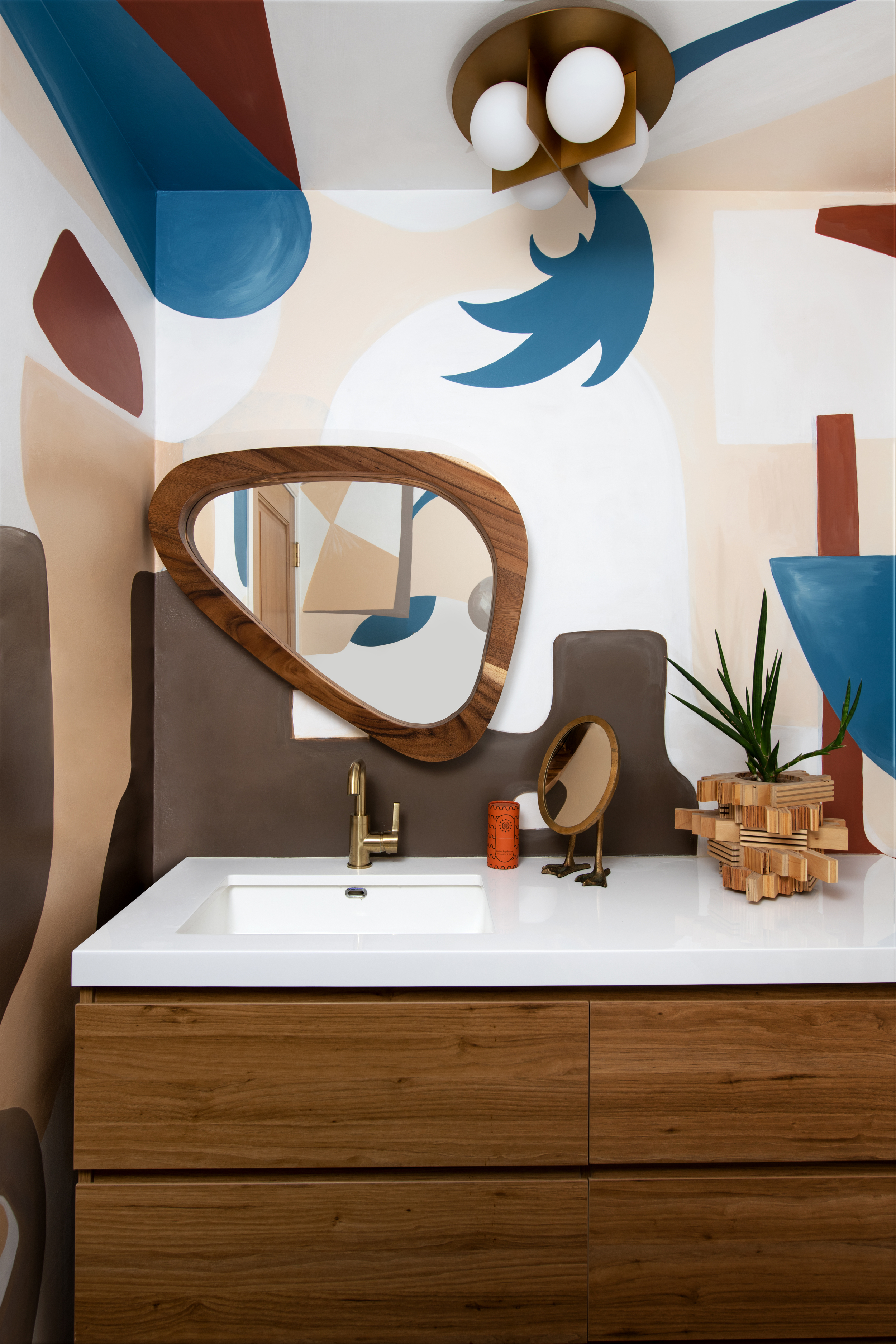
Hand-painted wall murals are a great way to change the ethos of the space and make a small bathroom seem like the jewelry box of a home. If you aren't as skilled with painting, seek out an artist and paint a customized mural in your bathroom. If nothing else, mural wallpapers can come to your rescue.
'In a small bathroom, create a splash by using bold wallpaper and paint the trim to match,' says Shannon Murray, founder of Shannon Murray Interiors. 'It's like a little explosive surprise when you open the door,'
4. Zone the space with paint
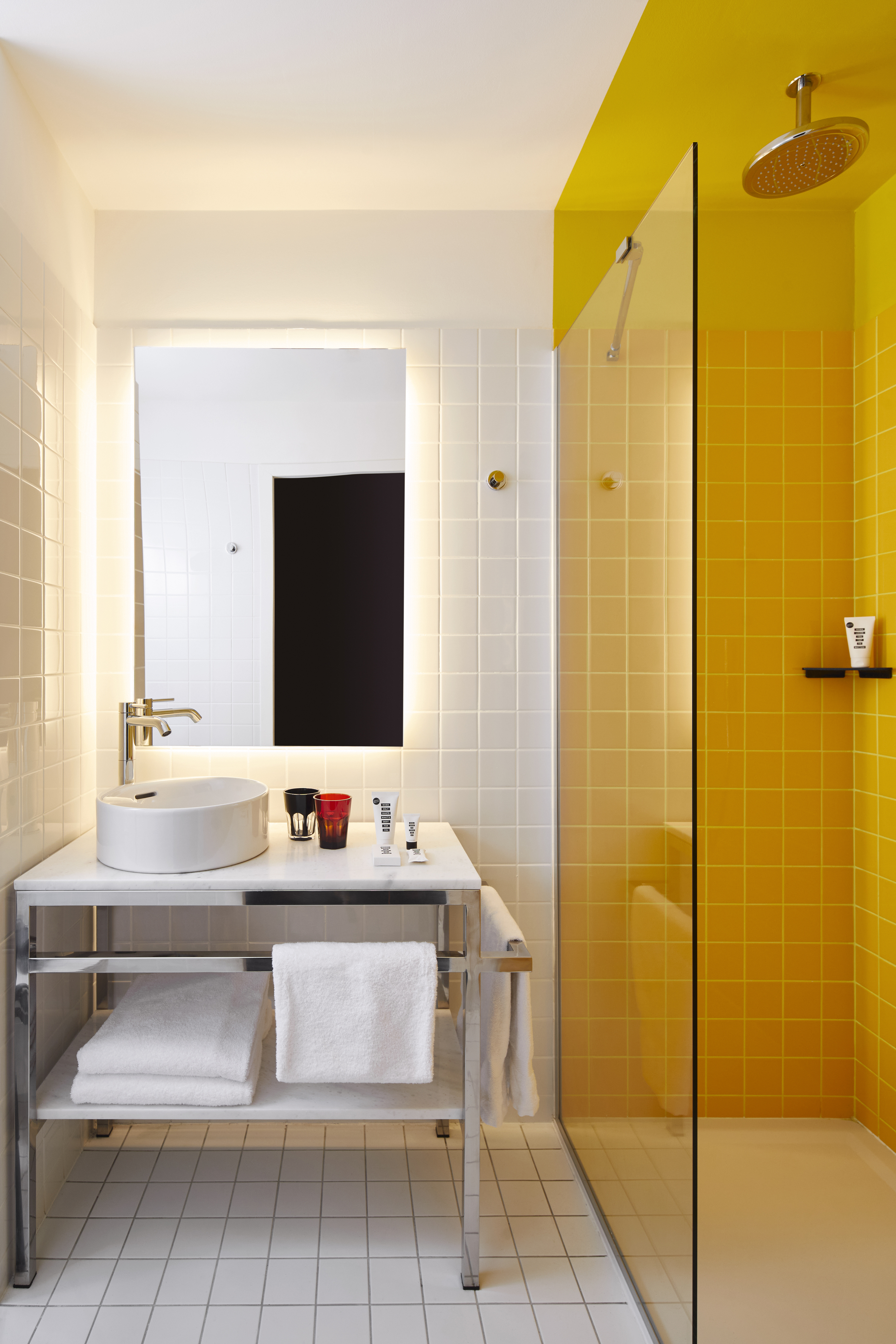
It is a common myth that only large spaces can be zoned and small spaces should have a one-color-everywhere scheme. In fact, by zoning a small space, you create the illusion that there is more area and functionality in the tiny room.
Zoning with paint can be particularly helpful in an ensuite bathroom, in case it doesn't have a solid divider. In small washrooms too, the trick can be effective. It makes the room division simple yet doesn’t starve spaces of light or compromise the open feel.
5. Give the vanity a lick of paint

Sometimes a slim bathroom or cloakroom can feel a bit bland and impersonal. If you live in a rental and can't paint the walls, take the color to the more flexible pieces like the vanity.
While purchasing a bright-toned vanity may not be in your plan, you could recycle an old piece of furniture, give it a new lick of paint and use it as a bathroom storage piece. A buffet or sideboard is also a good idea. Though it’s typically used for storing utensils, table linens, serving dishes, and the like, it provides lots of functional storage and surface space when repurposed.
Simply sand the piece and give it a fresh look with color. If your bathroom is largely neutral, tones of blue, green, or pink could lift the space. Add bright metallic handles to give the room some glitter.
'Don't be afraid to paint the vanity with a bright or daring color,' says Jessica Risko Smith, principal designer, JRSID. 'In small bathroom spaces, I love using playful or boldly patterned wallpaper on walls, then pulling colors from the pattern to paint ceilings, trims, and doors. Try to keep things light unless you are working with a powder or accessory bathroom, where make-up and other grooming are less likely.'
6. Add contrasting tones for drama
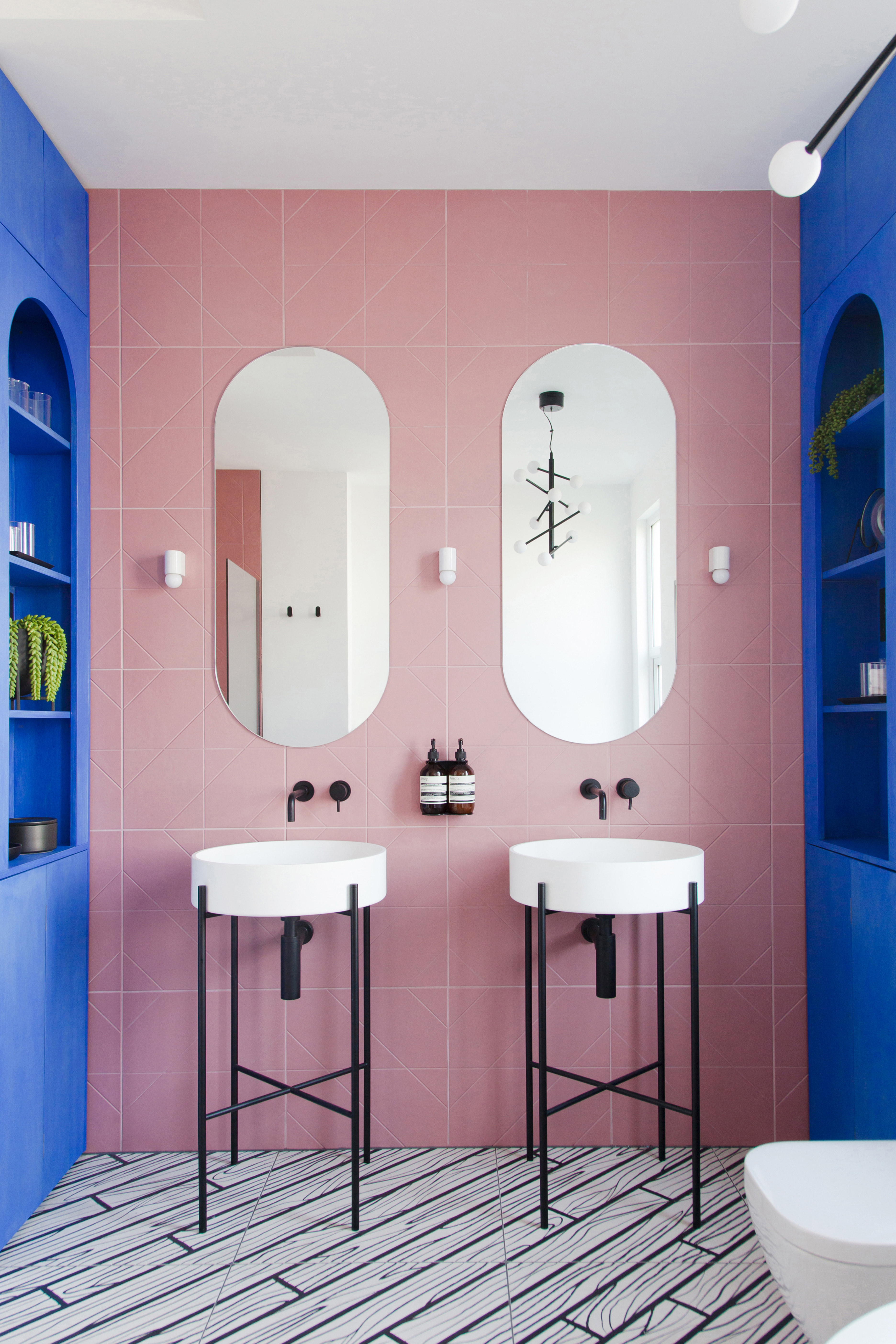
In the hands of a design pro, even the most jarring color combinations can look wonderful. It's not so much the colors but the way they are used, the surfaces they are used on, and their intensity and amount of use. All these factors play an important role in creating effective color contrasts.
When choosing two extremely bold hues, it's always better to use them both in balance, and limited quantity. For instance, two bold colors can be used on a single accent wall to create an impact. However, drenching the entire room in, say deep blue and stark yellow may not have the best results.
The most common couplings are of primary colors (red, yellow, or blue) and secondary colors (green, purple, or orange). There are lots of colors that go with pink, but it looks especially striking with blue. The cool shade of pink can subdue the sharp tones of blue, and create an unusual pairing.
This bathroom by 2LG Studio is a good example, where the pink wall tiles partner up with blue-painted cabinets and help create a smart scheme. The two colors hold their own, not dominating the other yet creating a wonderful scheme, lifting the humble small bathroom in the wake.
7. Paint the wall fluting a pleasing tone
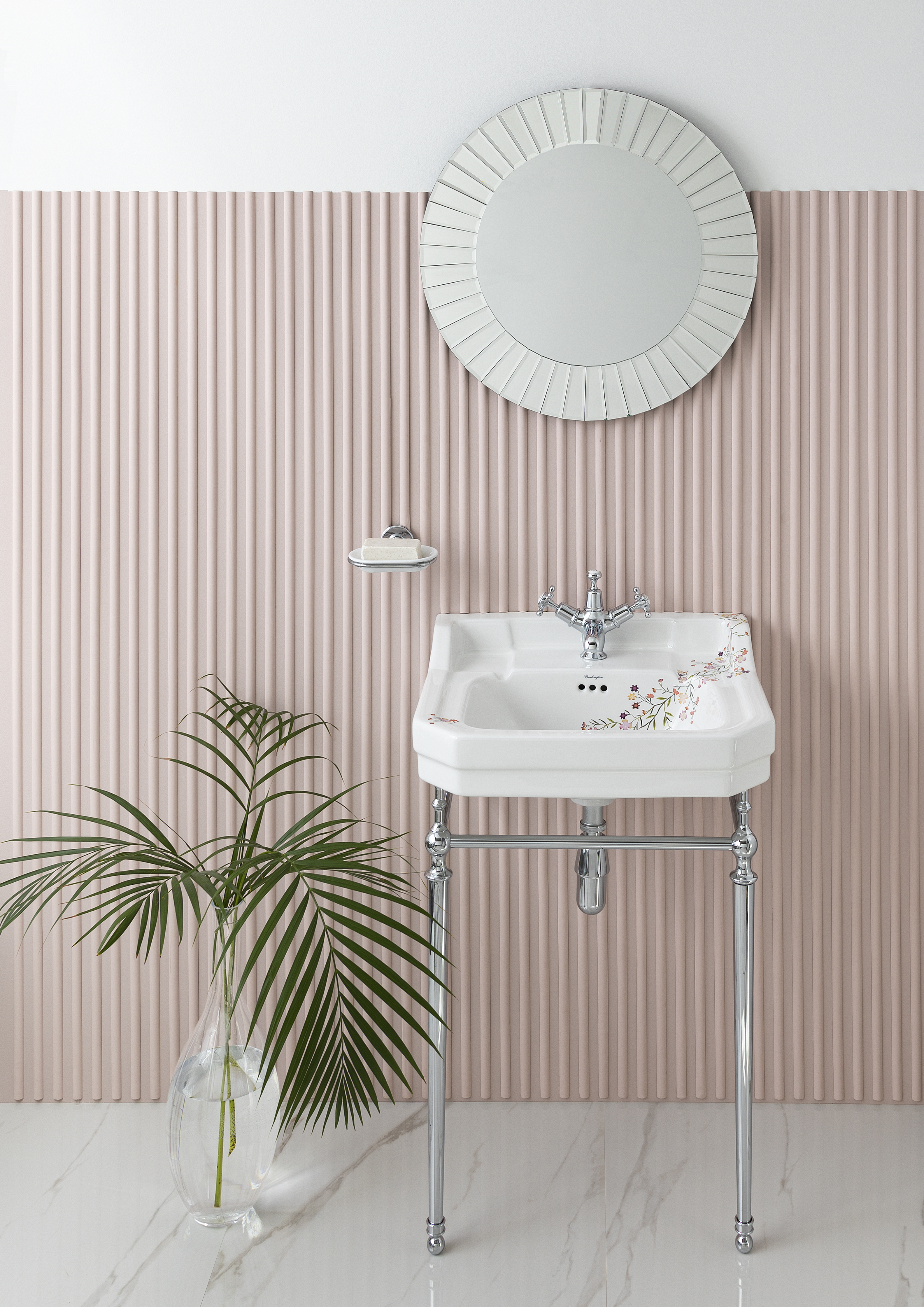
While you may have added fluting to your walls, one way to make it look seamless and even use it as an accent wall is to paint it. Since the wall already has an uneven surface, you'd want to color it a light paint, to reduce the visual breaks on the wall, and make it seem smoother.
'Another inexpensive way to make a space feel luxurious, paneling makes for a practical and decorative way of updating any space in your home,' says Helen Shaw, UK Director at Benjamin Moore. 'Picking the right color to decorate them with is key; if you prefer a subtle and elegant aesthetic consider a tonal scheme, or for a more impactful finish pick out a complimentary or feature color to draw the eye.'
'Whether you opt for traditional symmetrical patterns, the simple elegance of tongue and groove, or a more contemporary geometric design, ensure that you have thought through how the installation will work,' says Helen. 'Careful planning is essential so you can ensure that the joins work and that you’ve thought of practical considerations such as it will work about plug sockets, fireplaces, and doors.'
8. Use two tones from the same family
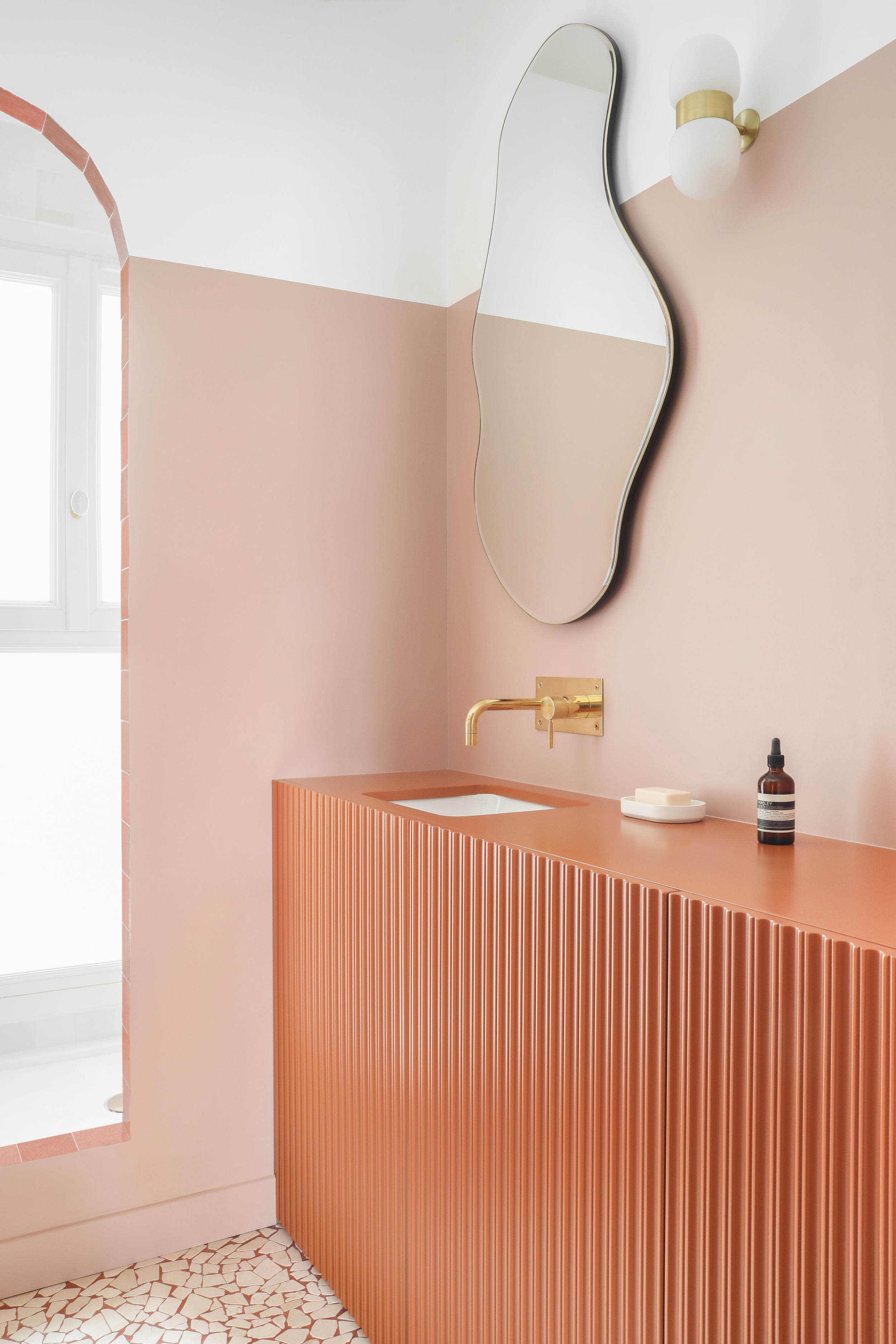
Contrary to popular belief, color is the easiest thing to compose in a home. And no, we don't mean complicated, contrasting themes; sometimes colors from the same family when paired together can create all the drama, and charm that you're looking for. Plus, two-toned walls when contrasted with interesting small bathroom tiles, can add dimension to a space.
'In the bathroom, we wanted to be bold in the architectural composition and the combination of materials,' says Hélène Pinaud, principal interior designer at Heju Studio. 'The raw appearance of the opus incertum floor blends with bold lines and colors and contrasts with the elegant relief washbasin unit.'
9. Paint borders for a unique look
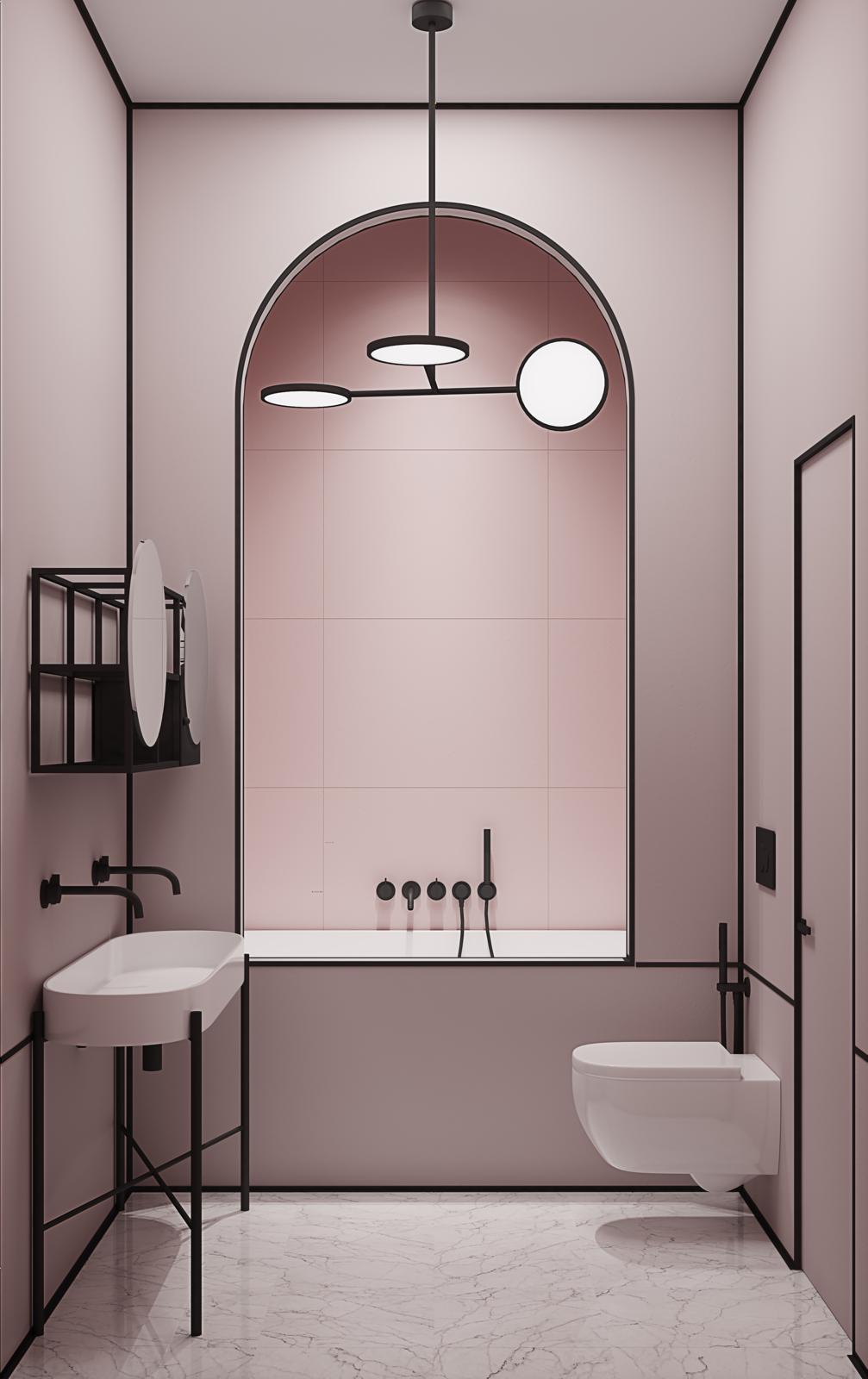
Doesn't this bathroom feel like a graphic print? This is the power of paint effects. By simply painting in borders of this room, the thin black lines contrast with the pink paint to highlight the shape of the design.
Another great way to create an optical illusion or a graphic look is with paint finishes. From flat, matte, eggshell, satin, and semi-gloss to a high gloss, different paint finishes can create very different, unique-looking spaces.
You can also try textured paint, chalk paint, or clay paint to give the walls an organic, uneven effect as if they are naturally colored.
10. Color the doors to create a dramatic entrance
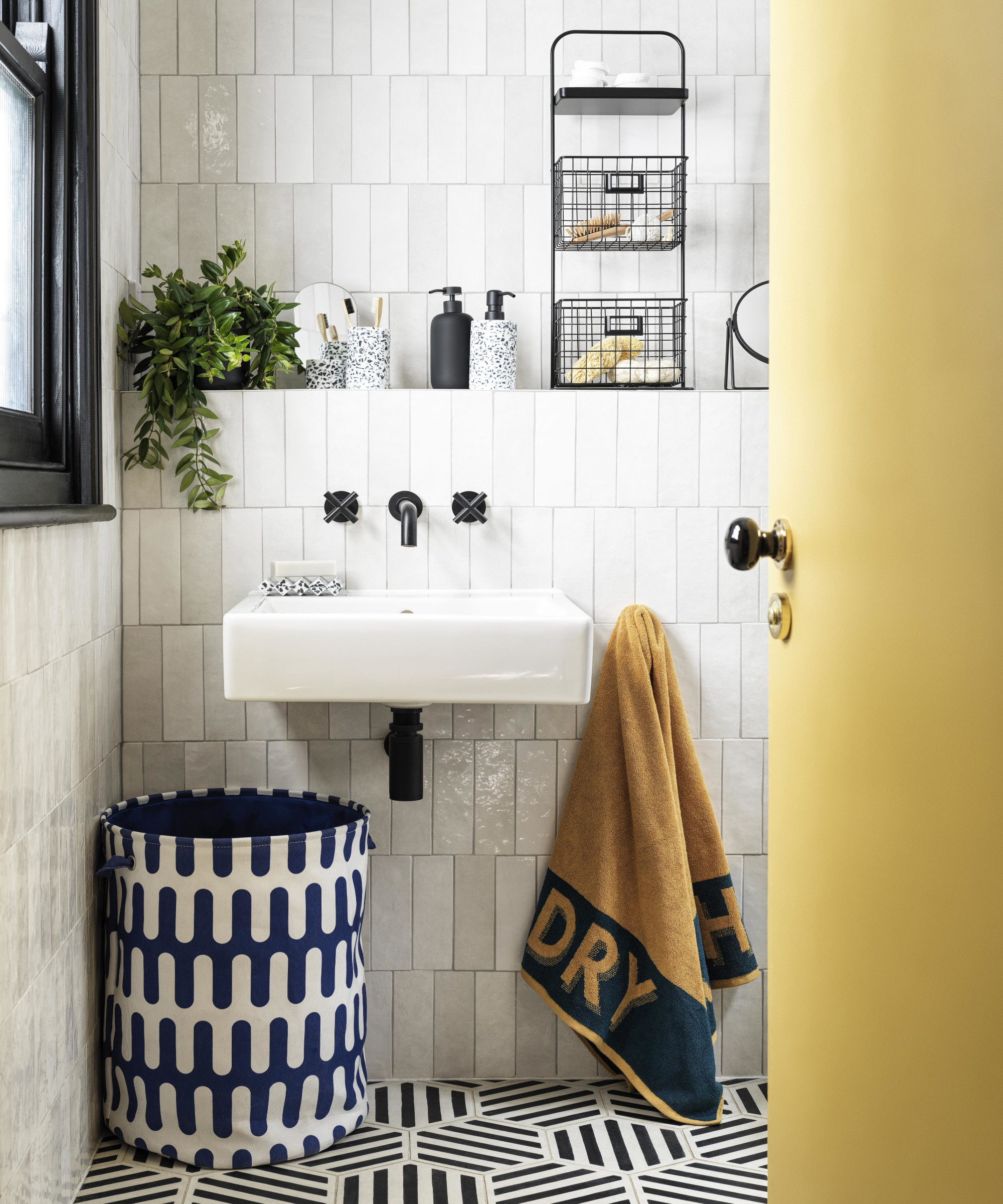
Sure, your small cloakroom may not be the most impressive in terms of size or architectural value, but this is a secret only for you to know. A lot of interior design tricks include creating a sense of illusion to fool the eyes and the mind into thinking of something that may or may not be there.
Painting internal doors are one such clever trick. With bold color, you can create a dramatic look, as if the user is entering into a beautifully curated, special space – almost like a red carpet into a special zone. Painted doors also help create wonderful zones in a home, where one painted door opens up a whole new world, and the other to another.
What paint finish is ideal for the bathroom?
Usually a satin finish is more durable and shinier and works for all types of bathrooms. It is easier to clean and can be used on walls, ceilings, and even the trim. One thing to keep in mind is that satin sheen can show imperfections on the walls, so make sure you sand the walls and prep it well to get the smoothest paint effect.
For the bathroom windows, that takes the maximum beating of shutters, blinds going up and down, candles, blow dryers and more, use a durable semigloss or gloss trim paint that doesn't show wear and tear. If the window experiences direct rain and wind, you may want to use exterior paint.
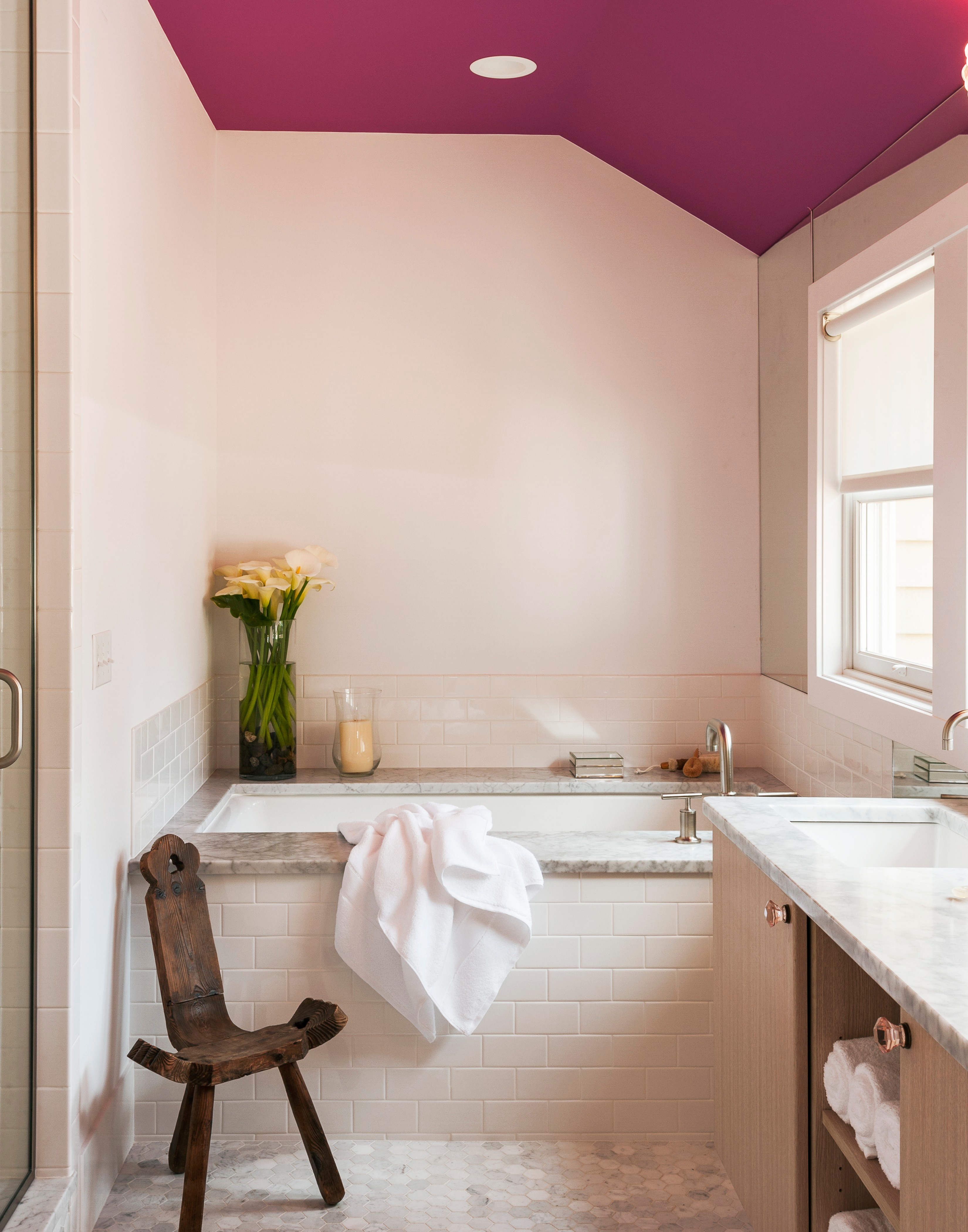
How do I prep my bathroom walls before painting?
There's a lot you need to do before you start the paint job. The bathroom is subjected to a lot of dirt, embedded soap scums, hair, and dust and these need to be cleared out before you can make the paint commitment.
Wash the walls, the shower, and the bathtub using Trisodium phosphate, or TSP, to remove all the gunk. Leave the bathroom to dry and ensure there is no moisture left in here at all.
The other big task is to remove the toilet tank because it can be extremely difficult to paint around it. You also need to cover the switches and outlet plates, remove mirrors, bathroom exhaust vent grilles, towel racks, and any other items that can get damaged with paint marks.
Apply a painter's tape on the ceiling, trim, and other areas that will not be painted. Once the bathroom is completely covered and secured, you're ready to start the paint job.

Aditi Sharma Maheshwari started her career at The Address (The Times of India), a tabloid on interiors and art. She wrote profiles of Indian artists, designers, and architects, and covered inspiring houses and commercial properties. After four years, she moved to ELLE DECOR as a senior features writer, where she contributed to the magazine and website, and also worked alongside the events team on India Design ID — the brand’s 10-day, annual design show. She wrote across topics: from designer interviews, and house tours, to new product launches, shopping pages, and reviews. After three years, she was hired as the senior editor at Houzz. The website content focused on practical advice on decorating the home and making design feel more approachable. She created fresh series on budget buys, design hacks, and DIYs, all backed with expert advice. Equipped with sizable knowledge of the industry and with a good network, she moved to Architectural Digest (Conde Nast) as the digital editor. The publication's focus was on high-end design, and her content highlighted A-listers, starchitects, and high-concept products, all customized for an audience that loves and invests in luxury. After a two-year stint, she moved to the UK and was hired at Livingetc as a design editor. She now freelances for a variety of interiors publications.